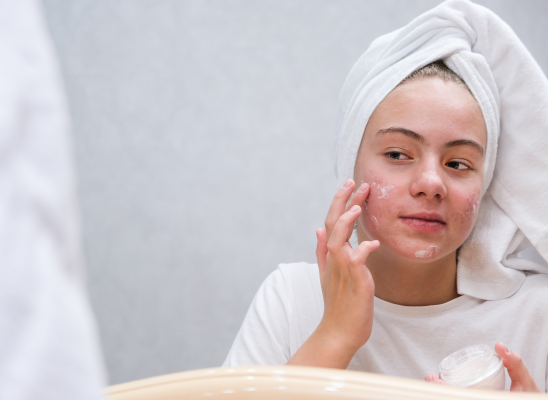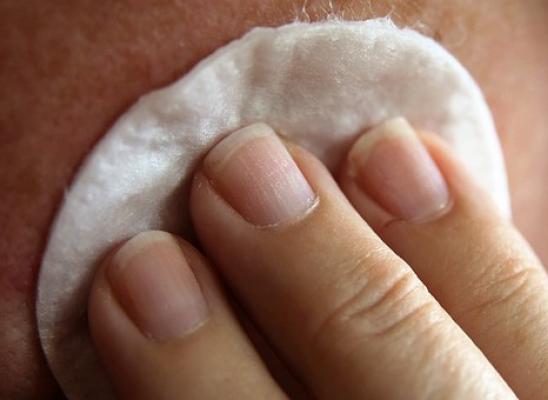ACT-Informed Exposure: A Viable Treatment for Excoriation Disorder?

Online test
Find out the severity of your symptoms with this free online test
Excoriation Disorder, commonly referred to as skin picking disorder, is a body-focused repetitive disorder (BFRB) characterized by compulsive skin picking that results in tissue damage and impaired functioning. It is estimated to affect about 2% of the population. It is thought that skin picking is under-reported so the actual prevalence could be higher.
Skin picking disorder is classified as an Obsessive-compulsive Related Disorder (OCRD) along with disorders including obsessive–compulsive disorder (OCD), body dysmorphic disorder (BDD), hoarding disorder, and trichotillomania (hair pulling). Skin picking shares similar qualities with OCD but is not the same disorder.
Skin picking is highly heterogenous, meaning that people pick in different ways and for different reasons. There are two main subtypes of skin picking – focused and automatic pulling.
- In focused pulling, the person is acutely aware of and intentional in their picking. Focused picking seems to occur as a response to a specific trigger such as intense urges to feel certain emotions either during or after the act or to relieve an intense physical sensation such as itching. Once started, it is difficult to stop.
- For others, their skin picking seems to be automatic and almost trance-like. They may not even be aware that they’ve picked at their skin. This type of picking seems to be done to regulate internal stimuli such as emotions and thoughts.
Some people experience both types of picking to varying degrees which can make treatment challenging.
There is currently no definitive treatment for skin picking. Habit Reversal Training (HRT) has long been the gold standard for treating skin picking and other BFRBs. It is thought to be especially helpful with the automatic or unconscious type of picking because it addresses the HRT is well-suited to address the automatic components of hairpulling because of its strong focus on increasing awareness, learning competing responses, and reinforcing behaviors. What HRT doesn’t do is address the emotional and cognitive factors associated with skin picking.
Acceptance and Commitment Therapy (ACT) is a powerful, evidence-based approach that uses acceptance and mindfulness strategies, together with commitment and behavior change strategies, to increase psychological flexibility. At its core, the aim of ACT is to help a person to face and accept what is out of their control and make choices that can improve and enrich their lives.
Exposure therapy has been highly effective with OCD and other OCRDs. The ACT model at its core relies on exposure to those things that someone might be anxious or distressed about. Could ACT-informed exposure be effective as part of a treatment protocol for skin picking and other BFRBs? In what is thought to be a first-of-its-kind study, researchers examine the viability of using ACT-informed exposure as part of treating skin picking.
Why ACT?
Part of HRT is the resistance of urges by reducing exposure to triggers/cues or creating barriers (e.g., wearing gloves). The focus of ACT is about acceptance of those urges without acting upon them, in other words, being exposed to cues or urges without acting upon them.
A primary goal of ACT is to learn mindfulness-based skills for handling painful thoughts, feelings, urges, images, and memories (called private experiences). Developing a more mindful relationship with their experiences allows the person to make positive changes.
For someone with a skin picking disorder, this exposure allows them to experience (be exposed to) their urges to pick and learn to accept them simply as bodily sensations and internal thoughts that don’t need to be acted upon. In this way, ACT addresses the cognitive and emotional components of skin picking that other approaches, like HRT, cannot.
Is ACT-informed Exposure Helpful?
The study combined the use of an ACT-informed exposure protocol and HRT and studied the effects of using exposure before HRT or after HRT. As expected, results supported the effectiveness of HRT in reducing skin picking.
What was surprising was the findings related to the exposure component. Rapid improvement in skin picking occurred following HRT in both groups. Improvements during the exposure phases were minimal. Participants who received HRT before exposure showed additional improvement during the exposure phase but the study author suggests that this result may have been due to the additional opportunity to practice using HRT.
All participants reported that they found exposure helpful and tolerable. One person noted that exposure was what “really accelerated” their treatment progress. What’s encouraging is that all participants maintained their treatment gains at their 3-month follow-up. The study author speculated that exposure, in helping participants learn to accept their urges to pick and not pick may have helped to reduce relapse.
The study author suggests that ACT-informed exposure, while helpful for targeting distress, it may be less effective with skin picking due to the pleasure response that people with skin picking often report.
The Takeaway
The study author concludes that while more research is needed to explore this potential treatment for skin picking, ACT-enhanced exposure might be most useful as a second-line treatment. The findings support the effectiveness of HRT for treating skin picking.
Finding innovative and effective treatments for skin picking and other BFRBs remains an area of need for continued research. Studies like this one expand knowledge and create pathways for future research. Hope lies in that endeavor.
References
1. Grant, J. E., & Chamberlain, S. R. (2021). Trichotillomania and skin-picking disorder: An update. FOCUS, 19(4), 405-412. https://focus.psychiatryonline.org/doi/10.1176/appi.focus.20210013
2. Association for Contextual Behavioral Science. (n.d.). Acceptance & Commitment Therapy (ACT). Retrieved from https://contextualscience.org/act
3. Acceptance and commitment therapy & exposure response prevention. (2021, July 12). ACT Beyond OCD. https://www.actbeyondocd.com/acceptance-and-commitment-therapy-exposure-response-prevention/
4. Thompson, B. L. (2022). Is ACT-informed exposure a viable treatment for excoriation disorder? A multiple baseline study. Behavior Modification, 47(1), 71-92. https://journals.sagepub.com/doi/abs/10.1177/01454455221091778?journalCode=bmoa
5. Counselling Connection. (2016, July 20). ACT: Definitions, goals and underlying philosophy. Retrieved from https://www.counsellingconnection.com/index.php/2013/10/11/act-definitions-goals-and-underlying-philosophy/
Online test
Find out the severity of your symptoms with this free online test
Start your journey with SkinPick
Take control of your life and find freedom from skin picking through professional therapy and evidence-based behavioral techniques.
Start Now



